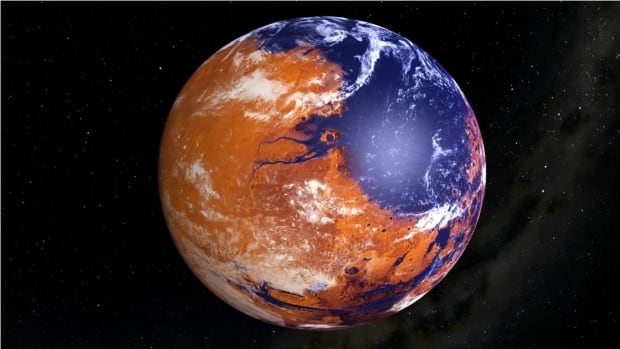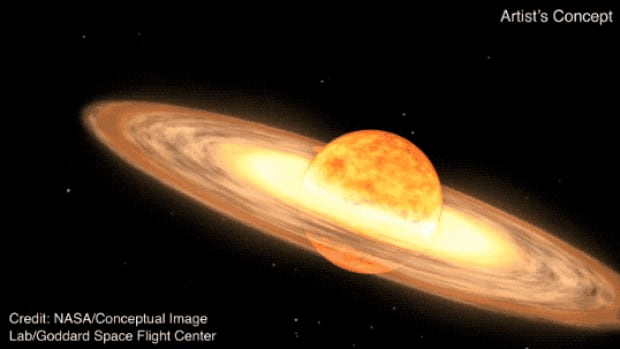With the discovery of more than 5,600 planets orbiting other stars and images from robots we have sent to all the planets in our solar system, it is becoming abundantly clear that Earth is unique among worlds.
Almost all of the exoplanets scientists have discovered since the 1990s fall into four main types: gas giants like Jupiter and Saturn, Neptune-like worlds like Neptune and Uranus, Super Earths that are up to 10 times larger than our planet but made of rock or ice — or a combination of them both, and terrestrial planets like our own and Venus and Mars.
NASA even created an Exoplanet Travel Bureau where you can virtually travel to these planets to visualize what they look like on the surface.

Many are exotic, unlike anything we know from our solar system, including a Super Earth found in a habitable zone, an extra hot Earth-sized planet covered in lava and even a planet situated among the carnage of a violent merger between two stars.
A lot of these exoplanets are quite similar to planets in our solar system, so to get a sense of how truly special Earth is for its life-sustaining properties, our own stellar backyard can offer plenty of perspective.
Earth’s hostile stellar neighbourhood
When American astronaut Buzz Aldrin stepped upon the surface of the moon to join Neil Armstrong on July 20, 1969, he described the lunar surface as “magnificent desolation.”
The moon is indeed magnificent, with towering mountain ranges, deep valleys and craters of all sizes everywhere. It will also kill you. Anyone who visits the moon cannot survive without the protection of a space suit, a spacecraft or habitat. With no air to breathe and unfiltered radiation from the sun and cosmos, an unprotected human would not survive more than a minute.
Our neighbouring worlds circling the sun are equally deadly. Mercury, like the moon, is largely airless and so close to the sun you could melt lead during the day while nighttime plunges to –179 C. Venus is even hotter thanks to a thick carbon dioxide atmosphere that produces a runaway greenhouse effect that scorches the ground at 464 C.
Mars is the only other planet humans could set foot on, but explorers there will also need protection because the thin carbon dioxide atmosphere contains no oxygen and it’s cold, with a mean temperature of –65 C.
The giant planets Jupiter, Saturn, Uranus and Neptune are made mostly of poisonous gasses such as ammonia, methane and hydrogen with no solid surface to land on.
So all the planets within reach for us to visit with current technology are pretty hostile places for humans.
The Goldilocks Zone
In our search for planets outside of our solar system, the holy grail of this search is to find another Earth-like planet in our galaxy. While interesting candidates have appeared, so far, no exact duplicates of Earth have shown up.

A number of exoplanets reside in the so-called Goldilocks Zone of their star, where they are just the right distance so their temperatures are not too hot and not too cold for liquid water to exist. On Earth, wherever there is water, there is life. But just because conditions might be right, it doesn’t mean life exists on any of these alien worlds.
Another limitation of these planets is that many of them orbit red dwarf stars, which are the most common star in our galaxy, but smaller and dimmer than our sun. That brings the Goldilocks Zone much closer to the star so a year on these planets takes only a matter of days or weeks.

When planets are that close to a star, they become gravitationally locked, so one side of the planet always faces the star and the other faces away. Our moon is tidally locked to the Earth, which is why we always see the same face of the man in the moon and not the far side.
For an exoplanet orbiting close to a star, one side would be in permanent daylight, where the sun remains stationary in the sky, neither rising or setting. The other side would be in permanent darkness, constantly exposed to the cold of space. In other words, the day side could be like the Sahara Desert and the night side like the south pole in winter.
Imagine the strange weather patterns on such a divided world. Certainly nothing like Earth.
The odds of another Earth existing somewhere out there in the universe seem quite high when you consider the sheer numbers. With a few hundred billion stars in our own galaxy, if every star has at least three planets, that’s a trillion planets in the Milky Way alone. And our galaxy is one of at least a hundred billion other galaxies in the visible universe.

But if that Earth-analogue is out there, it will be very, very far away from us, out of reach of our spacecraft, years, decades or centuries away by radio signal. In other words, we live on a small oasis in a very large, very hostile universe. This oasis is all we have.
There literally is nothing like planet Earth so it deserves a little more than one day of attention. So rather than Earth Day, it may be more fitting to have an Earth Century or Earth Millennium?
WATCH | NASA explains the different kind of exoplanets






